
A slum is a highly populated urban residential area consisting of densely packed housing units of weak build quality and often associated with poverty. The infrastructure in slums is often deteriorated or incomplete, and they are primarily inhabited by impoverished people. Although slums are usually located in urban areas, in some countries they can be located in suburban areas where housing quality is low and living conditions are poor. While slums differ in size and other characteristics, most lack reliable sanitation services, supply of clean water, reliable electricity, law enforcement, and other basic services. Slum residences vary from shanty houses to professionally built dwellings which, because of poor-quality construction or lack of basic maintenance, have deteriorated.

A shanty town, squatter area or squatter settlement is a settlement of improvised buildings known as shanties or shacks, typically made of materials such as mud and wood. A typical shanty town is squatted and in the beginning lacks adequate infrastructure, including proper sanitation, safe water supply, electricity and street drainage. Over time, shanty towns can develop their infrastructure and even change into middle class neighbourhoods. They can be small informal settlements or they can house millions of people.
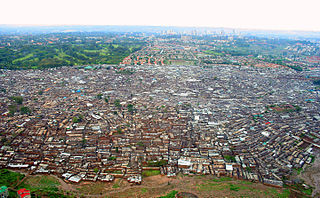
Kibera is a division of Nairobi Area, Kenya, and neighbourhood of the city of Nairobi, 6.6 kilometres (4.1 mi) from the city centre. Kibera is the largest slum in Nairobi, and the largest urban slum in Africa. The 2009 Kenya Population and Housing Census reports Kibera's population as 170,070, contrary to previous estimates of one or two million people. Other sources suggest the total Kibera population may be 500,000 to well over 1,000,000 depending on which slums are included in defining Kibera.
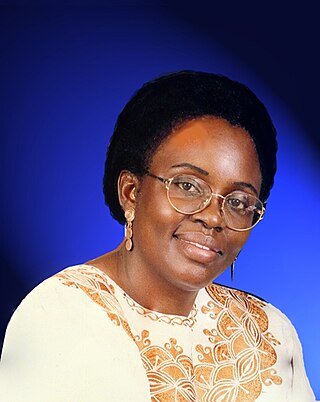
Margaret Atieno Ogola was a Kenyan novelist who wrote The River and the Source and its sequel, I Swear by Apollo. The River and the Source follows four generations of Kenyan women in a rapidly changing country and society. The book has been on the KCSE syllabus for many years, and it won the 1995 Commonwealth Writers' Prize for best first book, Africa Region. Ogola completed her final book, titled Mandate of the People, before her death and it is set to be released posthumously. She was also the recipient of the Familias Award for Humanitarian Service of the World Congress of Families.
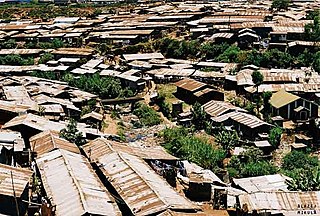
Founded in 2001 by Rye Barcott, Salim Mohamed, and the late Tabitha Atieno Festo, CFK Africa is an international non-governmental organization (NGO) based in the informal settlement of Kibera in Nairobi, Kenya. Registered as an NGO in Kenya and a 501(c)(3) in the US, CFK Africa is a pioneer of grassroots participatory development, and leads a community-based sports program, girls' empowerment centre, medical clinic, maternity centre, nutrition centre, young health and wellness centre, community-health outreach program, scholarship program, entrepreneurship and economic development initiatives, and a research-based initiative to improve educational quality in informal schools in Kibera. CFK Africa is also an affiliated entity at the University of North Carolina at Chapel Hill and has an office in the university's FedEx Global Education Center.

Mathare is a collection of slums in Nairobi with a population of approximately 500,000 people; the population of Mathare Valley alone, the oldest of the slums that make up Mathare, is 180,000 people. Mathare is the home of football teams Mathare United and Real Mathare of the MYSA. Mathare is currently part of two electoral constituencies; the titular Mathare Constituency and the northern part being in Ruaraka Constituency. The northern part was initially part of Kasarani Constituency up to the 2013 elections when Kasarani was split into three electoral constituencies; Ruaraka being among them. The southern part was domiciled in Starehe Constituency.

A flying toilet is a facetious name for a plastic bag that is used as a simple collection device for human faeces when there is a lack of proper toilets and people are forced to practise open defecation. The filled and tied plastic bags are then discarded in ditches or on the roadside. Associated especially with slums, they are called flying toilets "because when you have filled them, you throw them as far away as you can".
Kiambiu is a slum in Nairobi, Kenya with 40–50,000 residents. Kiambiu is 4 kilometers east of the center of Nairobi. Its name comes from the Swahili word "mbiu-mbiu", which translates as "to be on the run".
KICOSHEP, the Kibera Integrated Community Self-Help Programme, is an NGO founded by Anne Owiti in a sparse dingy clinic within the shanty settlement of Kibera in 1991. The majority of patients were diagnosed with HIV/AIDS related ailments, revealing the impact and spread of HIV/AIDS within the Kibera community and confirming the recent discovery that Kibera slum records the highest HIV/AIDS prevalence rates in Nairobi.
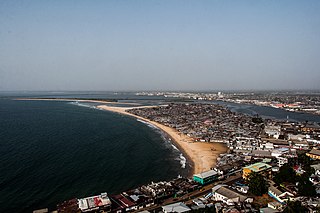
West Point is a township of the Liberian capital city of Monrovia, located on a 0.53 km2 peninsula which juts out into the Atlantic Ocean between the Mesurado and Saint Paul rivers. West Point is one of Monrovia's most densely populated slums.

Korogocho is one of the largest slum neighbourhoods of Nairobi, Kenya. Home to 150,000 to 200,000 people pressed into 1.5 square kilometres, northeast of the city centre, Korogocho was founded as a shanty town on the then outskirts of the city.
Amici del Mondo World Friends Onlus is an independent Italian non-profit association of social utility for international cooperationWorld Friends is a Non-Governmental Organization recognized by the Italian Ministry of Foreign Affairs by Law no. 125 of 2014 updated to July 16, 2016, registered in the register of ONLUS and the Register of Legal Persons D.P.R. 361. Recognized by the Government of Kenya as a Non-governmental organization (NGO), in 2011 obtained the same accreditation at the Italian Ministry of Foreign Affairs. Established in 2001, the association has its head offices in Rome and has volunteer-based regional offices in Piedmont, Liguria, Lombardy, Friuli-Venezia Giulia, Veneto, Emilia-Romagna, Lazio, Sicily. The association's African office is based in Nairobi.
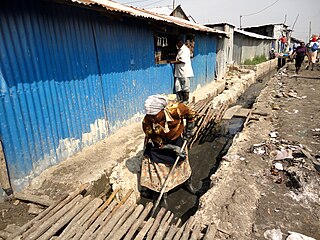
Mukuru Kwa Njenga is a slum in the Mukuru slums of Nairobi. Mukuru kwa Njenga is among other villages in Mukuru namely; Mukuru kwa Reuben, Mukuru kwa Njenga, Sinai, Paradise, Jamaica, Kingstone, Mariguini, Fuata Nyayo and Kayaba. The population exceeds 100,000.
Kawangware is a low income residential area in Nairobi, Kenya, about 15 km west of the city centre, between Lavington and Dagoretti.
Renee Botta is on the faculty of the Department of Media, Film & Journalism Studies at the University of Denver where she has conducted research on the relationship between media use and eating disorders among adolescents from diverse populations. She earned a Ph.D. in 1998 from the University of Wisconsin-Madison. At the University of Denver she teaches courses in health communication, mass communication & public relations in many different graduate and undergraduate courses. Her main focus of work away from the University has been about increasing sanitation and clean water in slums such as Kibera.

The Mathare Football for Hope Centre is located on Kangundo Road, in Komarock, Nairobi, Kenya. Its host organisation is Mathare Youth Sports Association (MYSA).
Shining Hope for Communities (SHOFCO) is a grassroots movement based in Nairobi, Kenya in urban slums providing services, community advocacy platforms, and education and leadership development for women and girls. SHOFCO serves more than 350,000 urban slum dwellers in 10 slums across three cities in Kenya.

Mukuru is a collection of slums in the city of Nairobi. It is approximately 7 kilometres (4.3 mi) south of the central business district of Nairobi. It is one of the largest slums in Nairobi. It stretches along the Nairobi–Ngong River, situated on waste lands in the industrial area of the city between the Outering Ring Road, North Airport Road and Mombasa Road. Mukuru is among other major slums in Nairobi such: Korogocho, Kibera and Mathare.
Peninah Nthenya Musyimi is a Kenyan lawyer activist, who established the 'Safe Spaces' project, to empower young women who were growing up in the slums of Nairobi. The project draws on her own life experience as the first person from her neighbourhood in the Mathare Valley to graduate from university. In 2011 she was the recipient of Care International's "I am Powerful" award.













